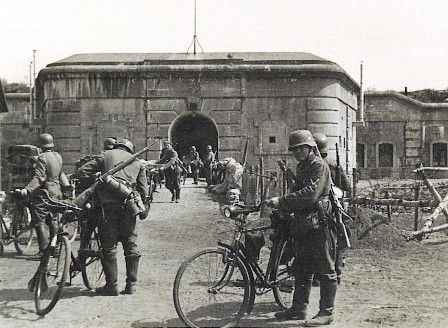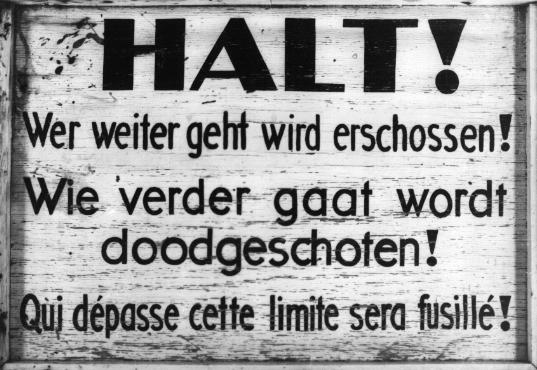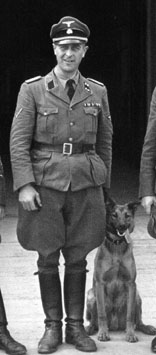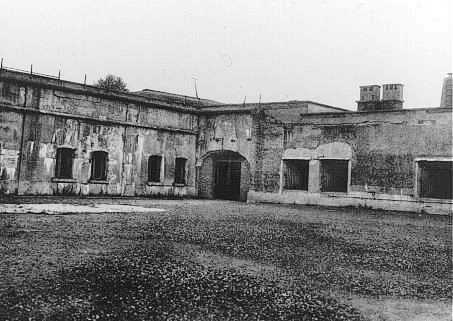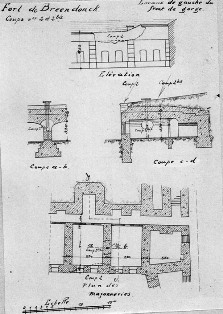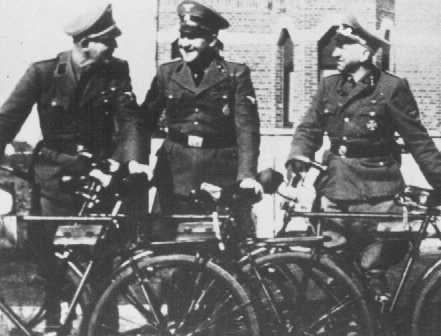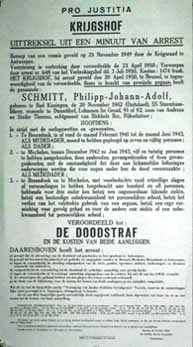The Breendonck Internment Camp in Belgium The camp known as Breendonck was located in the village of Breendonk, about 20 km outside of Mechelen. Built in 1906 the fortress was erected near the junction of the Antwerp – Brussels and Mechelen – Dendermonde roads, as part of a chain of fortifications. The fortress fell during the German invasion in 1914 and later it became the general Headquarters of the Belgian Army. In May 1940 Breendonck was briefly used as the General Headquarters of King Leopold III, leading the Belgian armed forces. After Belgium's surrender to the Germans the fortress was transformed into an internment camp by the Nazis (primarily as a transit camp for transport to Auschwitz). It gained a grim reputation as a place of torture and interrogation of a wide variety of prisoners. This fortress surrounded by a moat, consists of a building measuring 200 by 300 meters and can still be seen today, as a museum and memorial.The museum is only a part of the entire complex. There are different rooms with displays detailing the Nazi-occupation of Belgium, the SS rule at Breendonk, as well as to the post-war trials of the executors. In the former showers and kitchen works of art can be seen that was made by the prisoners. Breendonck as an internment camp At the end of August 1940 the Germans turned the fortress into a Polizeihaftlager and three weeks later, on 20 September the first group of detainees, numbering twenty persons, mostly “politicals” and Jews of foreign nationality, were brought to the camp. The camp was under the control of the Sicherheitspolizei (Security Police) and was run by SS men, with Wehrmacht personnel serving as guards. At the end of 1941 they were joined by Belgian SS men. Among the Belgian SS –men were Wijss, De Bodt, and Pellemans, who were renowned for their cruelty. The physical conditions at Breendonk were among the worst in Western European camps. In addition, the camp commanders subjected the prisoners to terrible cruelty and violence. During the first year of the Occupation, the Jews made up half the total number of prisoners. From 1942 onwards and the creation of the internment camp at the Dossin barracks where the Jews were assembled before their departure towards the east and the extermination camps, most of the Jews disappeared from Breendonk, which gradually became a camp for political prisoners and members of the Resistance. The first commandant of the camp was Sturmbannfuhrer Philip Schmitt, who was followed in 1943, by an Austrian Karl Schonwetter. The officer in charge of forced labour was Untersturmfuhrer Artur Prauss, who had the reputation of being the most cruel person in the camp staff. The camp commandant came directly under the authority of the Security Police chief for Belgium and Northern France, Konstantin Canaris, and then of his successor Ernst Ehlers. In the initial phase conditions in the camp were reasonably tolerable, and the Jewish prisoners were not separated from the non-Jews. But at the end of 1940 this changed, and the “Aryan” prisoners were put into separate living quarters, although both groups continued to work side by side. At first the Jews were in the majority, but during 1942 when the deportations from Belgium commenced, their numbers decreased. Almost all the Jews of Belgium were then put into the Jewish transit camp at Mechelen, prior to deportation to Poland and probable death in the extermination camps. The non-Jewish group consisted mostly of members of the underground, mostly leftist groups, hostages and black market operators. The total number of prisoners incarcerated in the camp is estimated as having ranged from 3,000 to 3,600 of whom seven percent were Jews, but no precise figures are available. Some 300 persons perished in the camp from torture, harassment and the harsh conditions, 450 were executed by shooting and 14 were hanged. 54 Jews were deported to Auschwitz and of the 165 others, 65 died in the camp. Upon arrival at the camp, new inmates were brought to courtyard where they would have to stand facing to wall until they were processed into the camp. The were forbidden to move and any motion was severely punished. In the camp punishment consisted of beatings, torture in a specially designed chamber, hanging or execution by firing squad, either in the camp or nearby. The camp commander Lagerkommandant Phillip Schmitt was known to set his German Shepherd dog loose on the inmates. His wife was also known to wander the camp, ridiculing the inmates and ordering punishments at whim. Food was severely rationed for the prisoners and distributed in different quantities to the various types of inmates. Jews received the least food and water. Prisoners were served three meals a day. Breakfast consisted of 2 cups of a coffee substitute made of roasted acorns and 125 grams of bread. Lunch was usually 1 bowl of soup (mostly just hot water). Supper was again 2 cups of a coffee substitute made of roasted acorns and 100 grams of bread (sometimes with a spoon of marmalade or sugar). This was far from enough to sustain a human being, especially considering the intense cold or heat, harsh labour and physical punishments the prisoners were subjected to. Severe and arbitrary beating occurred daily. Once an inmate, a Jewish boy of less than 20 years of age, was unable to continue working. The Flemish SS guards threw him into the moat, he could not swim and they refused to let him out. He struggled for over 15 minutes before finally drowning. Prauss set the tone for the cruelty and brutality, one form of punishment was to drown prisoners, another was to bury prisoners up to their necks and then beat and kick them to death. Inmates were also forced to watch any executions that took place. They were only allowed to use the toilet twice a day (a large circular vat in the middle of one of the courtyards), all together at the same time. They were only given five minutes to do their business. Any longer would mean punishment. But none of the inmates had a watch, so most left after only a minute or so in fear of surpassing their allotted time. This frequently caused bowel problems, cramps and diarrhea. Political prisoners were executed in groups, from the end of 1942 onward and the camp was evacuated on the 6 May 1944, where afterwards the camp was populated with political prisoners. The Nazis carried out mass executions of political prisoners just prior to its liberation. With Allied forces approaching the camp, the Germans evacuated Breendonk in August 1944. The remaining prisoners were transferred to the Mechelen camp and then deported to camps in Germany and occupied Poland. The Allies arrived in Breendonck and liberated the camp on the 3rd of September 1944. After the ward trials of the Flemish SS guards who were considered Nazi collaborators, were held during 1946 in Mechelen - including some of the guards and officials at Breendonk. Of those who were convicted, 14 were sentenced to be executed by firing squad in 1947. 2 appealed their case and had their sentences revised to life imprisonment. 4 more people were sentenced to life in prison. 1 person to 20 years of prison. 1 person was acquitted. Two guards were sentenced to life but were never caught. By now, they have most likely died of old age. The Nazi camp commandant, Philipp Schmitt, was tried in Antwerp in 1949 and sentenced to death. He was shot on the 9th of August 1950. He never showed any remorse and denied all of the atrocities that occurred at Breendonk, claiming he was merely reeducating the inmates as ordered. The camp was turned into a museum in 1948 and in 1954 a memorial by the sculptor Idel Janchelevici, was erected at the site.
Sources: The Final Solution by G. Reitlinger – Vallentine Mitchell &Co Ltd 1953. History of the Second World War, published by Purnell London 1966 USHMM The Wiener Library The Belgian Archives The Jewish Museum of Deportation and Resistance Jewish Gen Copyright Chris Webb & Carmelo Lisciotto H.E.A.R.T 2009 | 